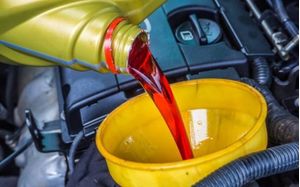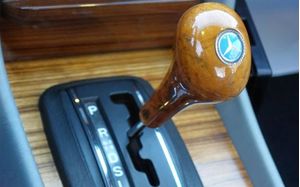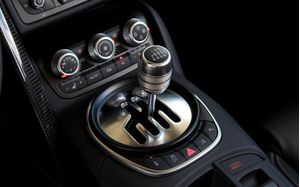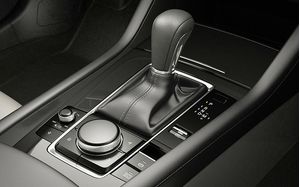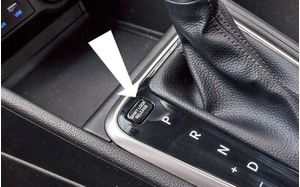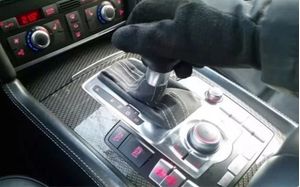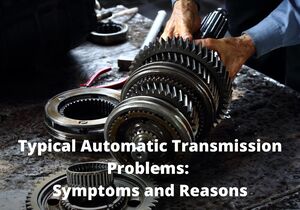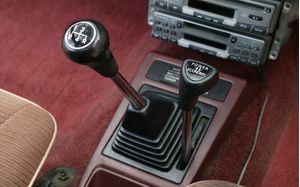RE:BUILDERS blog categories
Technical Transmission General
General Transmission issues are varied and may include several causes and ways of treatment. Transmission experts share their knowledge and provide useful tips for the industry people to follow.
Most of automatic transmission issues stem from ATF, thus repair professionals pay special attention to ATF and its timely change. If potential risks of lower ATF level are intuitively clear to most of car owners (oil starvation can lead to numerous malfunctions or even failure of the whole transmission unit), the situation with the fluid overflow may be misleading.
Automatic Transmissions from Mercedes and their Typical Repair Issues. Mercedes presented its own-produced hydro-mechanical automatic transmission 722.2 in 1961. This transmission found application on W111 220 SEB/300 SE models. Instead of torque converters applied in modern automatics, this transmission was equipped with a hydraulic clutch/coupling. This transmission had been produced until 1983.
Automotive engineers have always been involved in a constant search for an innovative solution that can solve the problem of varying the gear between the driving and the driven members in a vehicle automatically and in an infinite number of different ratios. Long before the arrival of continuously variable transmissions (CVTs), engineers had something to offer in this field.
We get used to newspaper headlines such as “Manuals are dying”, “Stick shift is going extinct”, “Stick shift sales keep falling”, but it should not be assumed that the development curve of manual transmissions stopped at 4-5-speed units without any smart technologies. In reality, modern manual transmissions also can be equipped with a variety of remarkable features.
Recently,
Top Gear arranged an exciting speed competition between the Tesla Model S
Performance and the new Porsche Taycan Turbo S. Despite the fact that the Tesla
had an edge in weight and power, the German car came out victorious in the 0-60
sprint. The
secret of this result lies in one important powertrain difference between these
two great cars, namely the transmission unit.
While cars equipped with manual transmissions gradually become outdated, many car manufacturer still integrate the feature allowing drivers to shift their own gears. How it can be implemented in automatic cars? The answer is simple – easy-to-use and efficient paddle shifters.
Rapidly growing share of automatic transmissions in modern vehicles made it possible to increase the level of comfort on the road, optimize the process of gear shifting and fuel economy, and to implement some features related to the road safety. All these benefits are particularly important on urban roads with heavy traffic. But why designs of automatic transmissions still include a manual mode of operation?
It is well-known that modern automatic transmissions are much more complex than conventional manual transmissions, and therefore in addition to standard driving modes like D (Drive) and R (Reverse) automatics frequently have more additional features and operating modes.
With winter approaching, car owners perform necessary measures to prepare their cars for cold weather and icy roads. However, some inexperienced owners of cars equipped with automatic transmissions frequently do not know how cold weather may affect transmission units and frequently disregard such a simple procedure as a transmission warm-up. In this article, we will consider how ignoring of the automatic transmission warm-up may affect your vehicle.
Having a transmission shop that you can trust and refer to at any point - for maintenance or for a serious repair - is very advantageous and stress-saving. Below we prove several pieces of advice on how to select a shop you can count on.
What are typical transmission failing symptoms and what are the reasons: Slipping gears, no shifting, hard shifting, shuddering, shifting delays, this in not a full list of strange bahaviour of your automatic transmission, let us explain.
It is vital to understand that repair cost depends on a sum of many factors. We will break these down in detail but typically transmission repair is seldom cheap. It is a relief if all you need to do is a solenoid replacement or a fluid flush. Fluid change will come at a cost of $80-$240. Fluid leak repair will have you spend an average of $150-$200, and solenoid replacement procedure will be around $130-$390. A rebuilt transmission comes from $1100 to $2700 and a remanufactured - from $1400 to $3500.
Car
manufacturers have always been looking for ways to make their cars more
cost-efficient and customer-friendly, developing less expensive car components
(engine, gearbox, etc.) in hope to increase the take rate of their products. In
this article, we go back to 1968 when Chevrolet released its semi-automatic
transmission named “Torque-Drive”.
To eliminate one of the most common transmission issues – jerks during gear shifting, an automatic transmission design includes a transmission brake band. The automatic transmission brake band is necessary to block planetary gear elements for a short time. In this article, we will consider the main purpose of the transmission brake band, its design peculiarities, place of installation, and why it is necessary to adjust this element.
The Super Shift transmission, also known as Twin-Stick, is a manual gear shifting solution designed by Mitsubishi in the late ‘70s. This solution found application on several Mitsubishi models, which were produced mostly in the ‘80s. This unit is notable for some design peculiarities: this 2WD unit has 8 forward gears.


